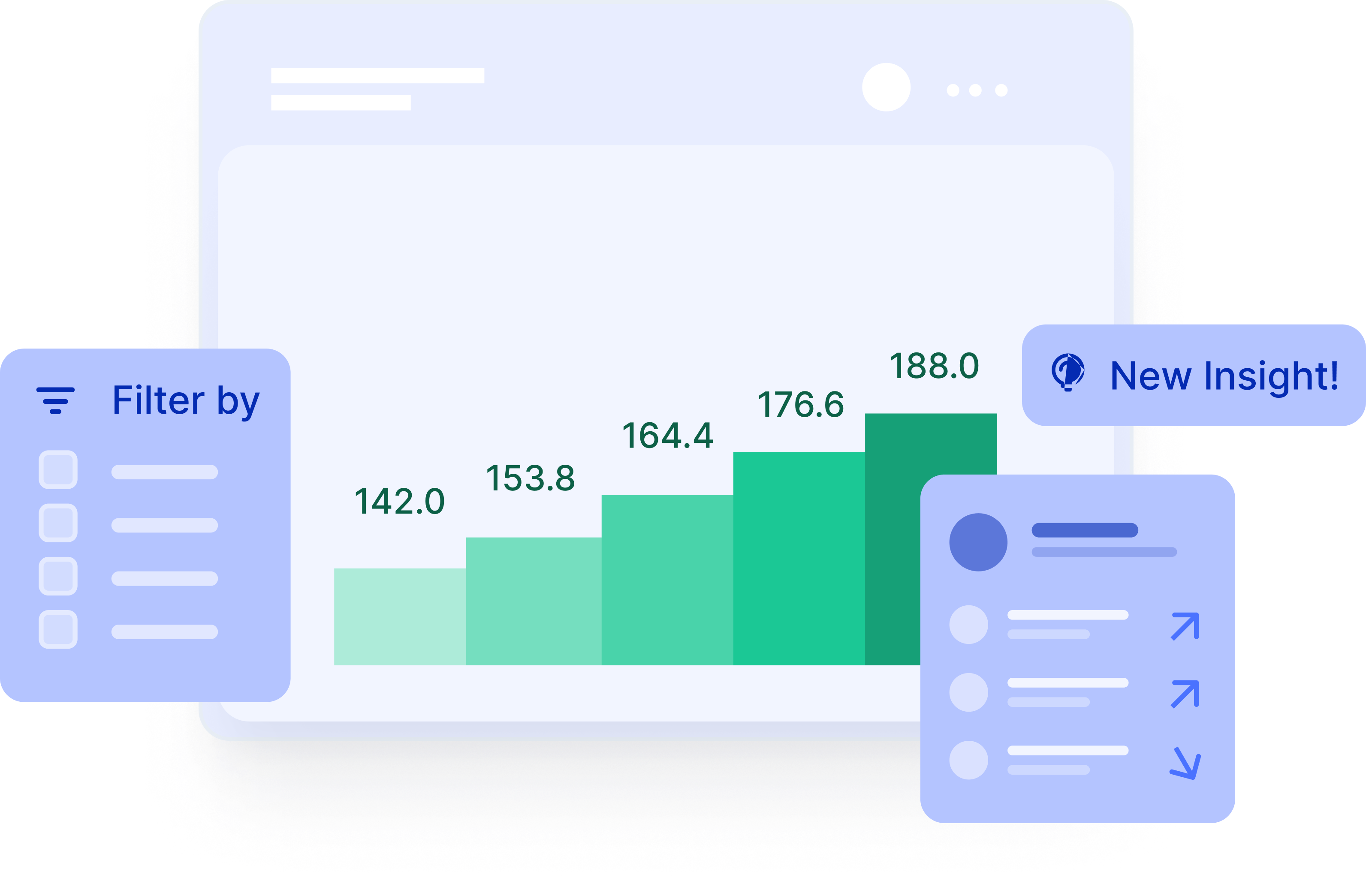CRM Data Hygiene: Best Practices for Maintaining Clean and Accurate Customer Data

Co-Founder & CTO
In today's data-driven world, businesses rely heavily on their Customer Relationship Management (CRM) systems to store and manage valuable customer information. However, dirty CRM data can quickly become a roadblock to effective decision-making, customer targeting, and overall business performance.
In this blog post, we'll explore the concept of data hygiene in CRM and the importance of maintaining clean CRM data. We'll also highlight CRM data hygiene best practices and offer effective strategies for maintaining CRM data integrity.

What Is CRM Data Hygiene?
CRM Data Hygiene involves practices and techniques to ensure that customer data in your CRM is accurate, up-to-date, and usable. CRM data can become "dirty" in several ways:
- Partial or missing data: This happens when crucial customer information is missing from the CRM, which can lead to incomplete customer profiles and hinder your ability to make well-informed decisions.
- Misalignment of definitions: For instance, when two sales reps have different interpretations of what it means to move an opportunity to a new stage in the sales pipeline, the data can become inconsistent.
- No data at all: If users are not inputting information into the CRM, your data will be incomplete, leading to inaccurate analyses and flawed decision-making.
These examples highlight the importance of data cleanliness in CRM. But what benefits does a clean CRM bring, and what are the best practices for achieving it? Let's explore.
The Benefits of Good CRM Data Hygiene
Proper data hygiene best practices can dramatically enhance your CRM's effectiveness. Here's how:
- Improved decision-making: Accurate data enables you to make informed business decisions. For example, reliable sales performance analytics can improve sales forecasting accuracy, directly impacting your revenue operations strategy.
- Enhanced customer segmentation and targeting: Clean and accurate CRM data allow you to segment your customers more effectively, improving targeting and potentially boosting funnel conversion rates.
- Alignment across departments: When everyone is working with the same accurate data, it enhances the alignment between departments. For example, when the sales and marketing teams are on the same page regarding customer data, it improves pipeline management and contributes to a more robust revenue operations management.
CRM Data Hygiene Best Practices
To enjoy the benefits of clean and accurate customer data, you need to follow these best practices:
Regular data cleansing and validation
- Identifying and removing duplicate records: For instance, if you have "John Doe" and "Doe, John" in your system, you might treat them as two leads when they're the same person. Using a tool to identify such duplicates and merge their records can prevent this issue.
- Standardizing data formats and fields: Ensuring all phone numbers follow the same format, or that states are abbreviated consistently (e.g., CA instead of California), helps keep your data organized and easy to analyze.
- Verifying and updating contact information: Over time, people change jobs, phone numbers, and email addresses. Using validation tools or services can help keep this information current.
Implementing data governance policies
- Assigning data ownership and responsibility: For instance, the sales team could be responsible for keeping contact information up to date, while marketing could own customer preference data.
- Establishing data quality standards: Setting clear rules on what data to collect and how to format it can drastically improve your data's consistency and reliability.
- Data entry constraints: Enforcing constraints in your CRM can prevent a lot of dirty data from entering your system. For example, you could set up your CRM to only accept data in certain formats or values. Even better, you might consider making certain fields mandatory before a deal can proceed. This ensures critical data is not missed and contributes to a more complete and accurate data set.
Utilizing automation and integration tools
- Implementing data cleansing and validation software: Such tools can automate much of the cleaning process, saving you time and reducing human error.
- Integrating CRM with other systems: For example, integrating your CRM with your email system can ensure that when a customer's email address is updated in one place, it gets updated everywhere.
Sightfull pre-built Reporting Templates

Training and educating CRM users
- Providing guidance on data entry best practices: Regular reminders and tips can keep best practices fresh in the minds of your users.
- Conducting regular training sessions on CRM usage: This not only helps with adoption but also provides a platform to address common mistakes and clarify any misunderstandings.
- Simplify workflows and remove unnecessary fields: If it takes a sales rep 10 minutes to enter a new lead into your system because they have to fill out a dozen unnecessary fields, they're likely to skip it. Streamlining your workflows and pruning your field list can significantly increase the amount and quality of data you collect.
- Measure what's important: For instance, if you track data completion rates for customer records and publish them for teams to see, they'll be more motivated to complete their records properly.

Overcoming Challenges in CRM Data Hygiene
Data hygiene in CRM can bring about its own set of challenges. Here's how to tackle them:
- Data decay: This is when data becomes outdated over time. For example, a customer might change their job, making their professional email and phone number in your system outdated. Regularly updating customer profiles can help combat this decay. To do this effectively, you might schedule periodic data reviews or use software that can verify and update data automatically.
- Resistance to change: It's human nature to resist change, especially when it means more work. But by providing clear instructions, addressing concerns, and offering training, you can help users see the value in maintaining clean data. One effective approach could be showing the Account Executives (AEs) how clean and accurate data can help them close deals faster, manage their pipelines more efficiently, and ultimately earn more money. For instance, demonstrate how inaccurate data can lead to missed opportunities or how it can make their job harder in the long run. Regular training and real-life examples can help drive home the importance and benefits of maintaining clean CRM data.
- Seek professional assistance or outsourcing: If data hygiene feels too overwhelming, you can always consider hiring an external data cleansing service. They can clean up your existing data and set up procedures to keep it clean in the future.
- Start measuring and setting business goals: If improving data hygiene is a business goal, then measure it and make it a part of your regular business reviews. For example, track the percentage of records that are complete and up to date, or measure the time it takes to enter a new lead into your system before and after a data hygiene initiative. Making these metrics visible to everyone shows that you are serious about data hygiene. Tools like visualization layers or revenue analysis platforms can help with this. Implementing these strategies for maintaining CRM data integrity can significantly improve your CRM system's overall effectiveness and your business's performance.
Conclusion
In the era of data-driven decision-making, CRM data hygiene is no longer an optional activity but a necessity. It's crucial for effective data management in CRM, impacting everything from decision-making to customer targeting and alignment across departments. By following the best practices outlined in this blog post, you can ensure your CRM contains clean and accurate customer data. This will enhance your CRM's effectiveness and directly contribute to your business's success. So, start today, and remember: A clean CRM is a powerful CRM.
Discover how Sightfull can help you keep your CRM clean
Precisely track and analyze your revenue performance
Gain access to essential insights and trends that directly impact your ability to drive revenue growth and enhance business performance.